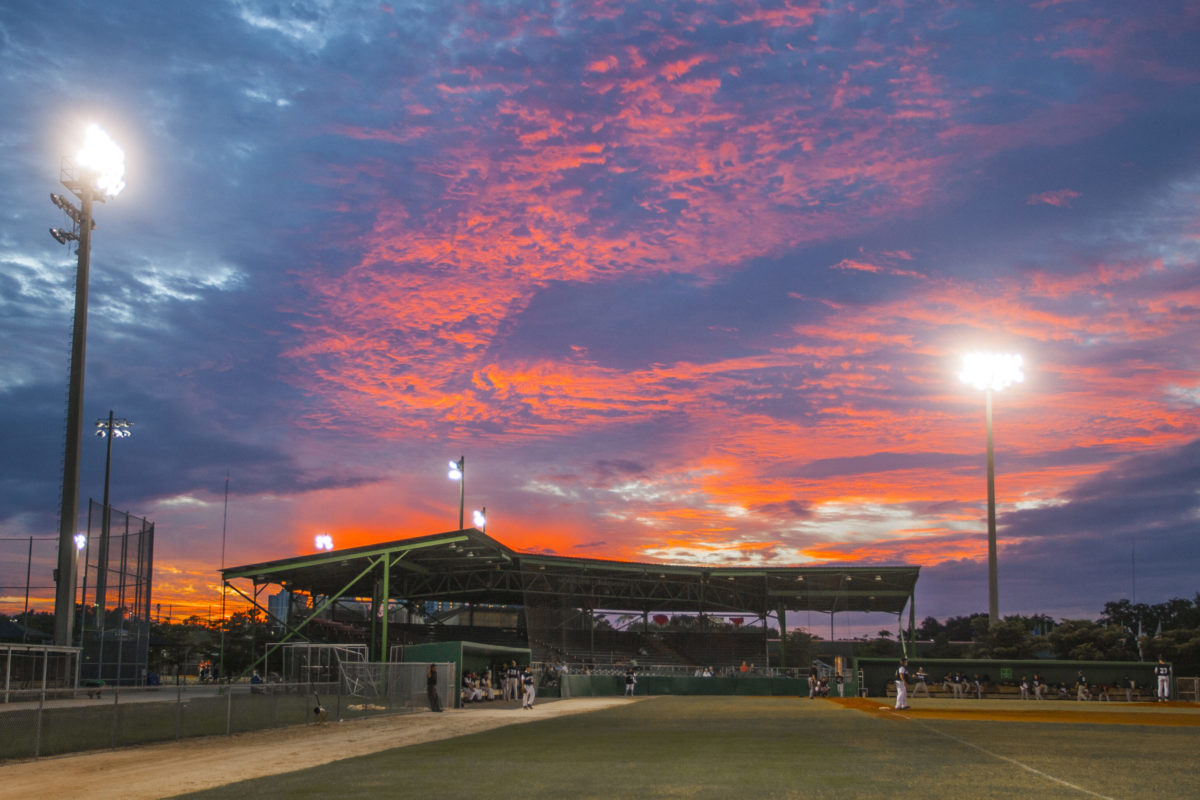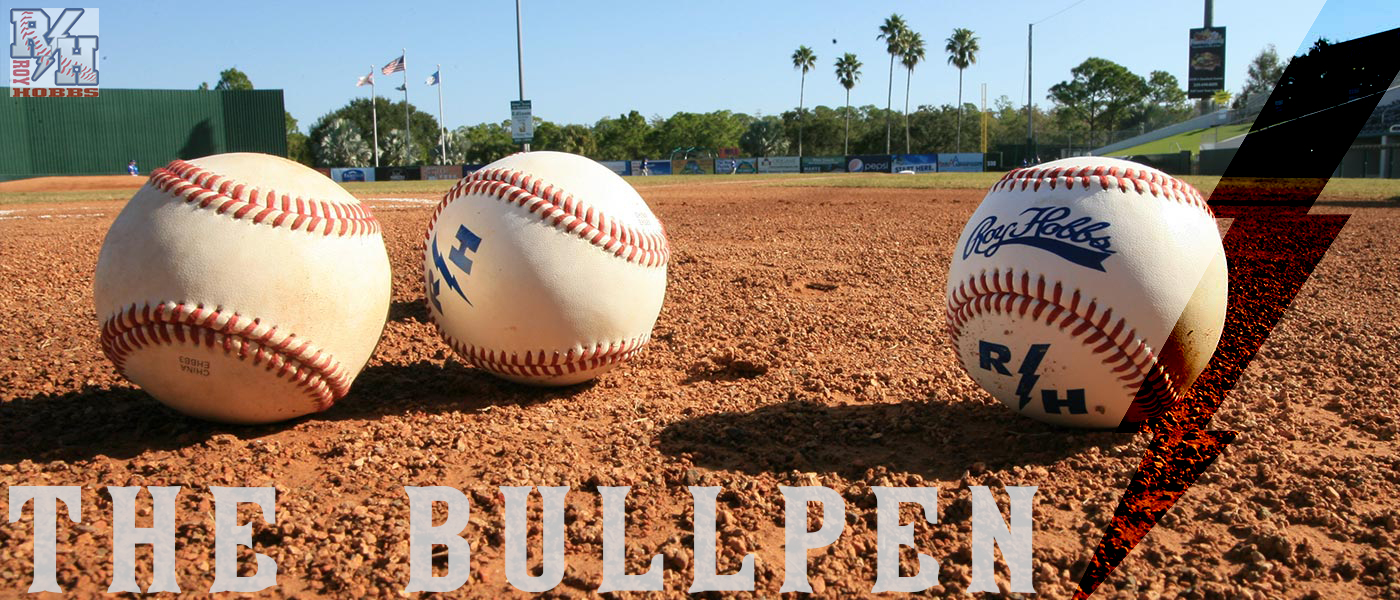
Terry Park: A baseball park with legendary status
Historic venue was spring training home for vaunted Philadelphia A’s.
BY GLENN MILLER
Roy Hobbs Baseball
When Roy Hobbs players step into the batter’s box or start windups on the mound at Terry Park in the 2021 World Series, maybe they should pause, take a breath and reflect on who preceded them in those very places.
One of the greatest teams in baseball history called this its spring training home. That would be the 1929-31 Philadelphia A’s, who won three consecutive American League pennants and the World Series in 1929 and 1930.

They lost the 1931 World Series in seven games to the Cardinals. Now, 90 years later tributes are due these long-gone legends who fell one game short of winning three consecutive titles.
The A’s dominated the American League at a time when the New York Yankees had Babe Ruth and Lou Gehrig. The A’s prepared for seasons at one of the sites of the Roy Hobbs World Series, a historic venue beloved by many.
Another site may no longer be available for the World Series. City of Palms Park may be razed by community leaders and replaced by another type of development. The park’s future is uncertain.
The past of Terry Park and the old A’s, however, is certain and well-documented. The A’s left Fort Myers in those magical years, traveled north by train and
dominated, winning more than 100 games each of those seasons when the schedule was 154 games. What about the Yankees with Ruth and Gehrig? They were no match, finishing 18 games behind the A’s in 1929, in third place in 1930 a whopping 24 games back but crept closer in 1931 but still finished 13 1/2 games back.
Philadelphia was managed by Hall of Famer Connie Mack. His lineup included blue chip Hall of Famers pitcher Lefty Grove, catcher Mickey Cochrane, first baseman Jimmie Foxx and left fielder Al Simmons.
Their run of pennants ended the year part-time Fort Myers resident Thomas Edison, who watched them play at Terry Park, died and Mickey Mantle and Willie Mays were born.
The A’s were the best of white baseball in a time nearly two decades before Jackie Robinson broke the color barrier in 1947. They played before batting helmets, divisional play, jetliners, the DH, expansion, TV and social media. Not one of the 16 big-league teams were west of St. Louis. Prohibition was the law of the land and inter-league play was decades away.
When the A’s began reeling off pennants, Herbert Hoover was president, they won the 1929 World Series just before the stock market crash and it was the same year of the First Academy Awards. The best picture winner that year was “Wings,” which was written by John Monk Saunders. Saunders committed suicide in a Fort Myers Beach cottage in 1940 during spring training, when the Cleveland Indians trained at Terry Park.
But this is about the A’s, not the Indians.
In 1996 Sports Illustrated profiled the old A’s with a cover story proclaiming them “The Team That Time Forgot.”
Maybe time has forgotten them but Roy Hobbs Baseball’s Inside Pitch has not.
Another quarter century has passed since that story and the A’s who came to Terry Park every year from 1925 to 1936 have receded even deeper into the mists of history.
But their status as legends remains.
The names of some of those players attest to how long ago it was, that the men who played were born in the early 20th century or tail end of the 19th century. The A’s had players named Bing, Mule, Dib, Homer, Pinky and Rube.
But they dominated for three years thanks in great part to the sublime talents of their Hall of Famers.
LED BY LEGENDS
How good were those legends and do they deserve the label legends?
In the 2001 “Bill James Historical Baseball Abstract,” historian, author and sabremetric pioneer Bill James ranked each of the players near the best ever at their positions.
The ace of the staff was Lefty Grove, who was at the height of his considerable powers those three pennant winning seasons. He compiled a 79-15 record over those years, led the American League in ERA and strikeouts each season and somehow managed to find the time to save a league-leading nine games in 1930.
Oh, he also had 70 complete games combined over those three seasons. For a little historical context, the current MLB career leader in complete games has 26. That is a tie between Justin Verlander and Adam Wainwright. Grove had 27 complete games in both the 1931 and 1932 seasons.
James ranked him the No. 2 pitcher all time behind only Walter Johnson.
Anybody stepping on the Terry Park mound this fall should step back off the mound before throwing the first pitch and think about what a phenomenal talent Grove was 90 years ago.
He was 31-4 in 1931. The only 30-game winner in the past 80 years is Denny McLain in 1968.
Grove was a fireballing 6-foot-3, 190-pounder whose dominance is clear through a visit to baseball-reference.com.
The modern analytical tool of WAR wasn’t around in the 1920s and 1930s. In 1931, though, thanks to the use of an analytical way back machine, Grove’s pitching WAR was 10.4. The next best that year was Cleveland’s Wes Ferrell at 6.2.
Grove’s catcher was Mickey Cochrane, who James ranked as the fourth-best catcher ever, behind Yogi Berra, Johnny Bench and Roy Campanella.
Cochrane was a supremely gifted athlete, who lettered in an improbable five sports at Boston University before starting his pro baseball career. In addition to baseball, he boxed and played football, basketball and hockey, all on varsity teams in college.
In his 13-year big-league career, the final four with the Tigers, he hit .320. Cochrane was in the prime of his career during those three pennant-winning seasons with the A’s. He hit .331, .357 and .349 those years and caught 130 or more games in 1929 and 1930.
Despite all his athletic prowess, Cochrane only had one season with double-digit homers. That was 1928, when he hit 12.
The most fearsome presence in the Philadelphia lineup was a man nicknamed The Beast. That was 6-foot, 195-pound first baseman Jimmie Foxx.
Like Cochrane, Foxx was a supremely talented. He also played soccer and ran track at Sudlersville (Md.) High School and set a state record in the 220-yard dash. He could have attended the University of Maryland on a track scholarship but chose to focus on baseball.
Connie Mack was glad. Foxx first joined the A’s in spring training in 1925 when he was 17.
He got only a taste of the bigs that year, appearing in 10 games and going 6-for-9. Not bad for 17, an age when many Roy Hobbs players were playing high school ball.
Foxx’s greatness can be easily determined by going to his page on baseball- reference.com and seeing who his career is most similar to statistically.
His most similar batters: Ted Williams, Lou Gehrig, Manny Ramirez, Frank Thomas, Mel Ott and Mickey Mantle.
Foxx had more than 30 homers and 100 RBI in each of the pennant-winning seasons.
Witty Yankees pitcher Lefty Gomez said Foxx was strong that he had “muscles in his hair.”
And this was in an era before weight-training and PEDs.
Long after their careers ended, Gomez was watching the 1969 moon landing on TV with his wife. Astronaut Neil Armstrong bent over and picked up a white object.
Gomez said that “I knew immediately what it was. That was a home run ball hit off me in 1933 by Jimmie Foxx.” Some versions of the story say it was 1937.
The fourth Hall of Famer from that team is the least known to modern fans. That would be a man born in 1907 in Milwaukee as Alois (or Aloysius) Szymanski.
Reference sources vary on the spelling of his first name.
But the man who became known as Al Simmons and nicknamed Bucketfoot because of his unorthodox batting stance became a great player.
He was one of the great hitters of the era, winning batting titles in 1930 (.381) and 1931 (.390). In 1929 he hit .365 with 34 homers and a league-leading 157 RBI. He was a slugger who rarely struck out, at least compared to his modern counterparts.
His career high in strikeouts was 76 in 1932. Baseball-reference lists his most similar hitters as Hall of Famers Goose Goslin, Harry Heilman, Roberto Clemente, Rogers Hornsby and George Brett.
Clemente and Brett also trained at Terry Park. Clemente with the Pirates and Brett with the Royals.
Of the four Hall of Famers on the A’s team three died in their 50s – Foxx, Cochrane and Simmons. Grove died at 75 in 1975.
Mack, who was born during the Civil War, died in 1956 at the age of 93. He managed the A’s through the 1950 season, when he was 87. His teams won nine pennants and five World Series.
But he could not have won those 1929, 1930 and 1931 with just four great players. They were surrounded by good players.
THOSE OTHER GUYS
Take the 1931 starting rotation for example. Yes, Lefty Grove was an astounding 31-4 But then came George Earnshaw (21-7), Rube Wahlberg (20-12) and Roy Mahaffey (15-4.) That’s a combined 87-27 from the starters.
They won more games than nine of the other teams in the majors that year.
These ballplayers who didn’t quite measure up to Cooperstown standards. Few do.
The 1929 team was second in team batting (.296) and first in ERA, 3.44. Their .975 fielding percentage was the league’s best.
Jimmy Dykes was the utility player in 1929 and hit .327.
There were no soft touches in the lineup or rotation those three years.
The fourth starter in 1929 was 45-year-old Jack Quinn, who was reportedly born Joannes Pajkos in Slovakia. Or maybe Hungary. Either way, he was 11-9 with a 3.97 ERA that year and pitched in the majors until he was 50. His last game came on July 7, 1933 for the Reds, six days after turning 50.
The contributions are too numerous to mention here but right-fielder Bing Miller was an outstanding player for those three seasons, hitting .331. .303 and .281. In 1930 he played all 154 games.
We will mention two other worthies and then wrap this up.
Left-handed pitcher Rube Wahlberg posted 18-11, 13-12 and 20-12 records those three seasons. In five World Series games he was 1-1 with a 1.903 ERA.
Leadoff batter and second baseman Max Bishop wasn’t a great hitter but he got on base. Boy, did he get on base. Walks may not have been valued as much back then as they are now, but Mack knew what was doing with Bishop putting him at the top of the order.
He led the American League in walks in 1929 with 128 and followed that up with 128 walks again the next year and 112 in 1931. He once walked an MLB record eight times in a doubleheader.
After his playing career, he coached at the Naval Academy from 1938 to 1962. The Cadets play their home games in Max Bishop Stadium.
In the 1920s, Bishop and Wahlberg and Grove and Foxx and Cochrane and Simmons and all those others played their home spring training games at Terry Park.
In a few weeks, Roy Hobbs players will once again hit, field, throw and run where they once excelled and became a team of legends for the ages.
They are a team we at Roy Hobbs Baseball have not forgotten.

